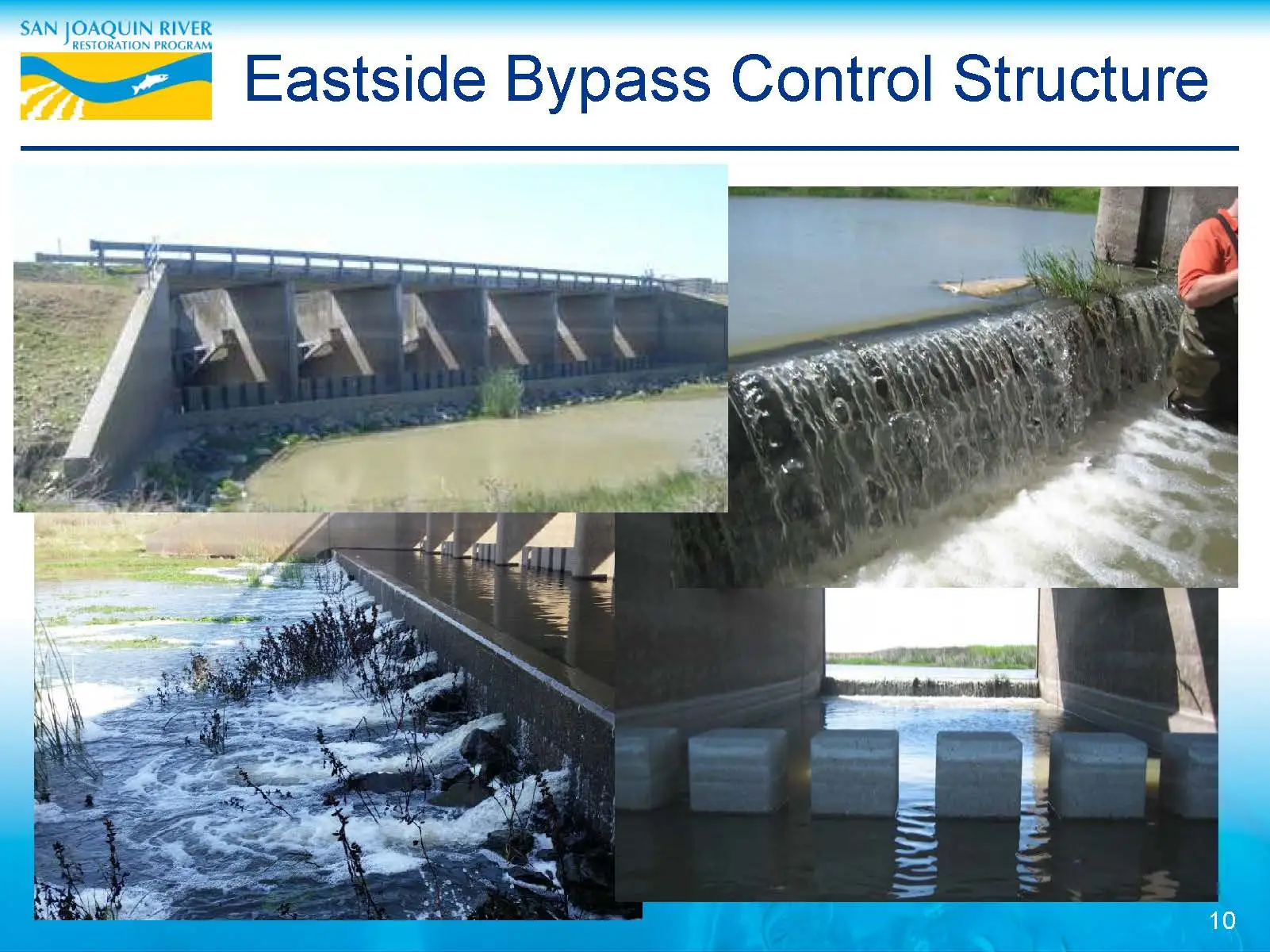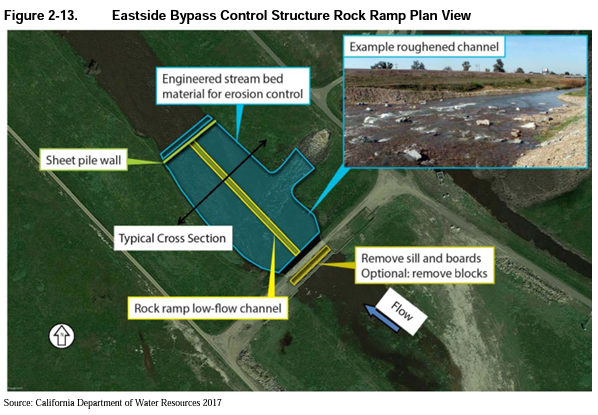Native Fish Passage in San Joaquin River at Eastside Bypass Control Structure
Project Lead: US Fish and Wildlife Service
Location of Project: Latitude: 37.205082, Longitude: -120.697574
Description of Project:
For over 60 years, the San Joaquin River saw no adult spring-run Chinook Salmon make their annual migration from the ocean to spawn – the fish had been cut-off from their native spawning grounds by Friant Dam and subsequent water diversions that dried up over 60 miles of channel. Chinook Salmon runs had been extirpated from the San Joaquin River upstream of the Merced River confluence. But all of that changed in 2019 when the San Joaquin River Restoration Program (SJRRP) documented its first returning adult spring-run Chinook. A main goal of the SJRRP is to restore fish and flows back to the San Joaquin River above the Merced River confluence to maintain a self-sustaining, naturally-reproducing Chinook salmon fishery.
One of the initial projects to help the SJRRP achieve this goal is the Eastside Bypass Fish Passage Improvement Project (Project). The Eastside Bypass Control Structure (EBCS) is within the Eastside Bypass and is part of the State’s flood bypass system (see map of the Restoration Area). The EBCS is a partial fish passage barrier. The objectives of the Project include installing a full-width rock ramp roughened channel below the EBCS and modifications to the EBCS to improve fish passage, while retaining its ability to provide flood control. Modifications to the EBCS to provide fish passage include removing a portion of the sill, half of the energy dissipation blocks within the four center bays, and 4-foot-high stop logs on the upstream side of the EBCS. In addition, an approximately 380 foot-long rock ramp would be constructed downstream of the structure to provide suitable passage from the downstream pool to the structure. The ramp would extend from bank to bank. It would be constructed by filling the large pool downstream of the structure with approximately 7,800 cubic yards of compacted fill up to subgrade elevation, and then adding a 3- to 4-foot-thick top layer of approximately 30,200 tons of Engineered Streambed Material (ESM) comprised of rock mixes with particle sizes ranging from boulders to sand and silt. The ramp also features a 1-foot-deep low-flow channel that has a 10-foot bottom width and 2:1 side slopes, making its top width 14 feet. To stabilize the end of the ramp, 30-foot-long sheet piles would be driven approximately 20 feet into the existing ground, so the top of the sheet pile matches the final grade elevation of the ramp. These elements will allow fish to move more easily through the EBCS with minimal impacts to the structure, as well as not require extensive operation or maintenance. The modifications to the EBCS and adding a 380-foot-long rock ramp downstream will allow passage for salmonids and improve passage for other native fish such as sturgeon and lamprey. Improved passage at the EBCS, especially during drought conditions, will help rebuild native fish populations in the San Joaquin River and build on the larger on-going investment for volitional passage for native fish in the Restoration Area.
The outcomes and deliverables of the Project would be removal and modification of barriers to fish passage under variable flow conditions, substantially enhancing fish passage and migration through the project area. For example, adult salmon migrating upstream would be able to enter the Lower Eastside Bypass and move into the Middle Eastside Bypass before rejoining the San Joaquin River channel at the junction of Reach 4B1 and Reach 4A. Juvenile salmon migrating downstream would be able to enter the system from the San Joaquin River Reach 4A or the Upper Eastside Bypass and move downstream through the Middle Eastside Bypass and Lower Eastside Bypass. Other native riverine fish species would gain access to the Eastside Bypasses and have access to newly connected mainstem habitat. Although temporary passage constraints may exist during instream construction, primarily associated with dewatering and fish rescue, long-term this Project will improve the overall conditions for Chinook Salmon and other native fish species. The design criteria for this Project are being developed in conjunction with the Settlement’s Implementing Agencies to identify criteria for fish passage (including velocities, depths, and fish species jump heights). The design criteria will be structured around life stages of the target anadromous species and the timing of the runs for upstream movement of adult fall and spring-run Chinook Salmon and winter steelhead and the downstream movement of juvenile life stages spawned from these runs.



